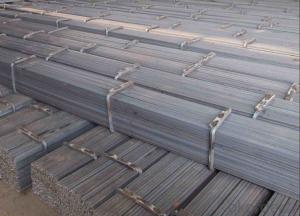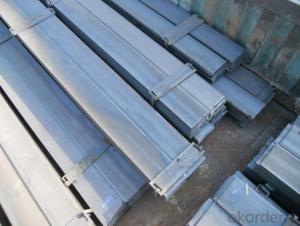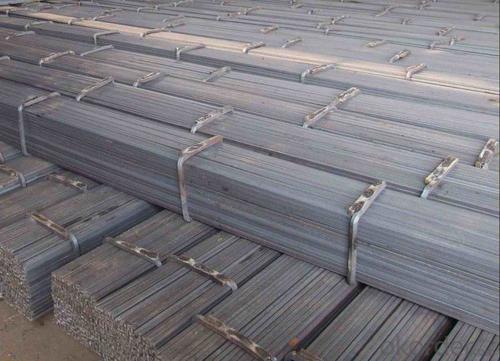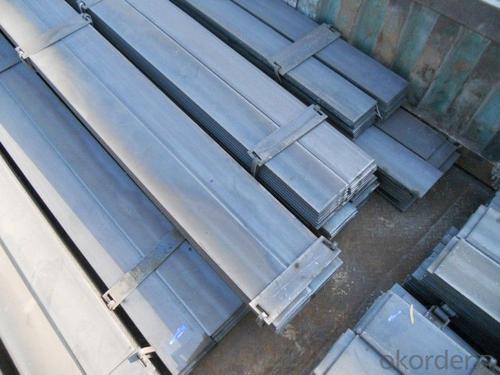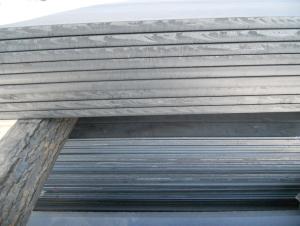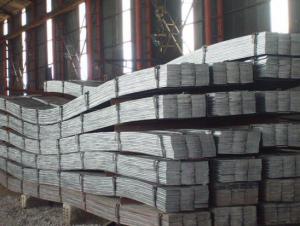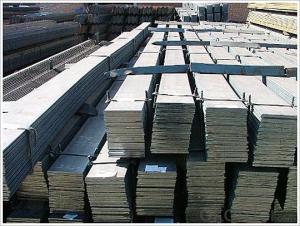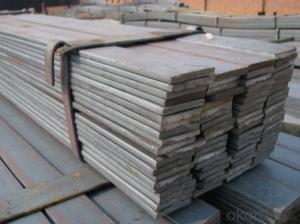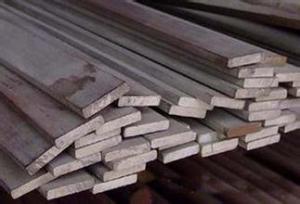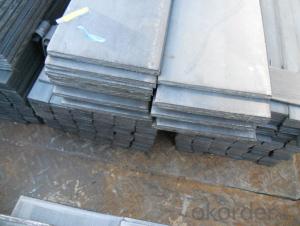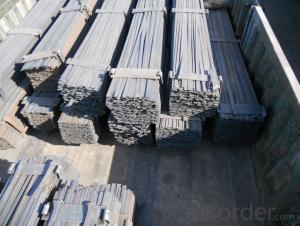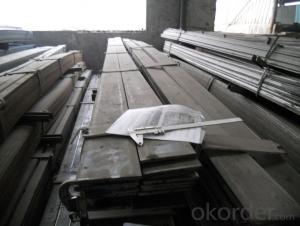Carbon steel flat bars with high quality and low price
- Loading Port:
- Tianjin
- Payment Terms:
- TT OR LC
- Min Order Qty:
- 25 m.t.
- Supply Capability:
- 100000 m.t./month
OKorder Service Pledge
OKorder Financial Service
You Might Also Like
Mild Steel Flat Bar Details:
| Minimum Order Quantity: | 25 m.t. | Unit: | m.t. | Loading Port: | China Main Port |
| Supply Ability: | 80000-100000MTS/YEAR m.t./month | Payment Terms: | TT or LC |
Product Description:
Specification of Mild Steel Flat Bar
Commodity: Mild Steel Flat Bar
Standard: GB;JIS
Material: Q195-235;SS400
Brand name: FLATSPACE
Origin place: China
Thickness: 3mm-30mm
Width:20mm-200mm
Length: Max 12m
Certification: SGS/BV
Chemical composition of Q235
Alloy No | Grade | Element(%) | ||||
C
| Mn
| S
| P
| Si
| ||
Q235
|
B
|
0.12—0.20 |
0.3—0.7 |
≤0.045 |
≤0.045
|
≤0.3
|
Physical properties of Q235
Alloy No | Grade | Yielding strength point(Mpa) | Tensile strength (Mpa) | Elongation after fracture(%) | ||||||
Thickness (mm) | Thickness (mm) | |||||||||
≤16 | >16--40 | >40--60 | >60--100 | ≤16 | >16--40 | >40--60 | >60--100 | |||
≥ | ≥ | |||||||||
Q235 |
B |
235 |
225 |
215 |
205 |
375--500 |
26 |
25 |
24 |
23 |
Usage/Applications of Mild Steel Flat Bar
Widely used for construction, Machinery manufacturing, Iron tower steel structure, Shipbuilding; Steel grating, Staircase, Bridge, Viaduct, Railway spare parts, Boilers making etc.
Packaging & Delivery of Mild Steel Flat Bar
Packaging Details: The Mild Steel Flat Bars are packed in bundles and loaded in 20 feet/40 feet container, or shipped by bulk cargo ,also we can do as customer's requirements.
Delivery Details:30~45 days upon the receipt of buyer payment by T.T. or L/C.
Production Flow of Mild Steel Flat Bar
The Mild steel flat bar is made through three processes:
1.Feeding the material: Feeding the row material (the steel plate) to Slitting Line.
2.Slitting:The steel plate would be slitted into expected width by lengthways cutter.
3. Leveled and cutting: The plat bar would be ground into level by the grinder and then cut into required length.
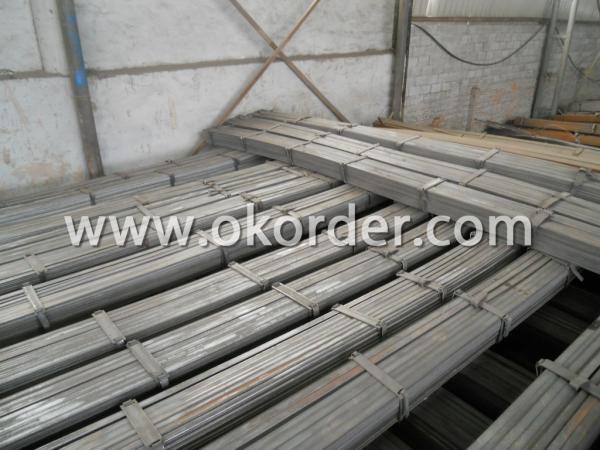
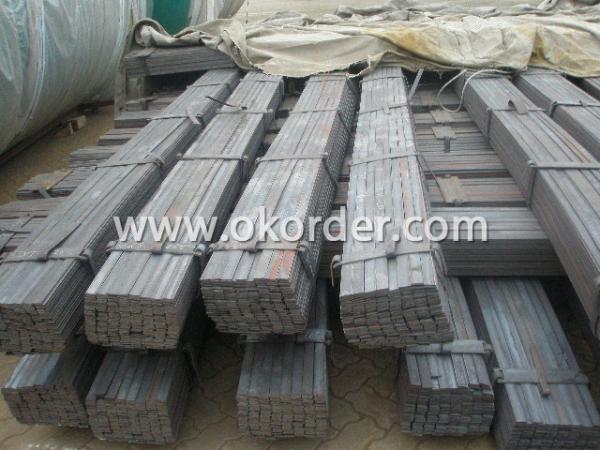
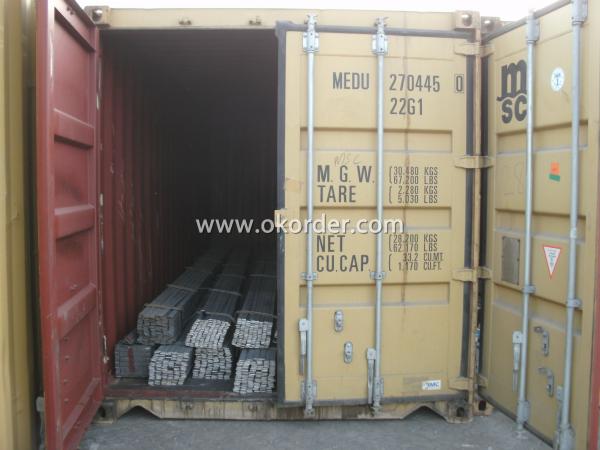
FLATSPACE is specialized in production and sales of slit flat bars. We offered the individuation processing service of slitting and crosscut. Our flat bar the width form 10mm to 1800mm, and thichness from 2.5mm to 25mm.
View Manufacturer's Shop
1. Manufacturer Overview | |
|---|---|
| Location | Hebei, China |
| Year Established | 2009 |
| Annual Output Value | Above US$ 150 Million |
| Main Markets | Southeast Aisa, Middle east, Africa |
| Company Certifications | |
2. Manufacturer Certificates | |
|---|---|
| a) Certification Name | |
| Range | |
| Reference | |
| Validity Period | |
3. Manufacturer Capability | |
|---|---|
| a)Trade Capacity | |
| Nearest Port | Tianjin |
| Export Percentage | 70%-80% |
| No.of Employees in Trade Department | 10-15 people |
| Language Spoken: | English; Chinese |
| b)Factory Information | |
| Factory Size: | Above 20,000 square meters |
| No. of Production Lines | 7 |
| Contract Manufacturing | OEM Service Offered; |
| Product Price Range | Average |
- Q: How do you determine the ductility of a steel flat bar?
- To determine the ductility of a steel flat bar, several methods can be used. One common method is the tensile test. In a tensile test, a sample of the steel flat bar is subjected to an increasing amount of force until it breaks. The test measures the amount of deformation or elongation the bar undergoes before breaking. Ductility is determined by calculating the percentage elongation or reduction in area of the sample. Another method is the bend test, where the steel flat bar is bent to a specific angle without fracturing. The angle at which the bar can be bent without breaking indicates its ductility. Furthermore, the impact test measures the ability of the steel flat bar to absorb energy under sudden loading conditions. This test involves striking the sample with a pendulum-like device and analyzing the amount of energy absorbed before fracture occurs. The higher the energy absorbed, the more ductile the material is considered to be. Overall, the ductility of a steel flat bar can be determined by conducting various tests, such as the tensile test, bend test, and impact test. These tests provide valuable information about the material's ability to deform without fracturing, ultimately indicating its ductility.
- Q: Can steel flat bars be galvanized or coated with other materials?
- Yes, steel flat bars can be galvanized or coated with other materials.
- Q: What are the fire-resistance properties of steel flat bars?
- Steel flat bars have excellent fire-resistance properties. Due to their high melting point and low thermal conductivity, they can withstand high temperatures for a prolonged period without losing their structural integrity. Additionally, steel does not contribute to the spread of flames or emit toxic gases when exposed to fire, making it a reliable choice for fire-resistant applications.
- Q: What are the different types of surface treatments for steel flat bars?
- Steel flat bars can be treated with various surface treatments, each serving a specific purpose and providing unique benefits. Some commonly used surface treatments for steel flat bars are as follows: 1. Hot-dip galvanizing: Immersing the steel flat bar in molten zinc forms a protective layer on its surface. This treatment offers excellent corrosion resistance and durability, making it ideal for outdoor applications. 2. Powder coating: A dry powder is applied to the surface of the steel flat bar and then cured with heat. This creates a tough and durable finish that is resistant to chipping, scratching, and fading. Powder coating is available in a wide range of colors and enhances the aesthetic appeal of the steel flat bar. 3. Electroplating: A thin layer of metal, such as chrome, nickel, or zinc, is deposited onto the surface of the steel flat bar through an electrochemical reaction. This treatment improves corrosion resistance, enhances appearance, and provides specific functional properties based on the chosen metal. 4. Paint coating: Applying a paint coating to the surface of the steel flat bar offers both protection and aesthetics. Paint coatings can be customized to meet specific requirements and are available in various types such as epoxy, polyurethane, and acrylic. They provide good corrosion resistance and can be reapplied when needed. 5. Anodizing: Although primarily used for aluminum, anodizing can also be applied to steel. This process involves creating an oxide layer on the surface of the steel flat bar through an electrolytic process. Anodizing enhances corrosion resistance and can be combined with coloring techniques to achieve a decorative finish. 6. Phosphating: Phosphating is a chemical treatment that converts the surface of the steel flat bar into a layer of phosphate crystals. This treatment improves corrosion resistance, provides an excellent base for subsequent coatings or paints, and enhances the adhesion of lubricants. 7. Shot blasting: Shot blasting is a mechanical surface treatment that involves propelling abrasive particles onto the surface of the steel flat bar at high speeds. This process removes impurities, rust, scale, and creates a textured finish, thus improving the adhesion of subsequent coatings. Each of these surface treatments offers distinct advantages and should be selected based on the specific requirements of the intended application, desired appearance, and the level of corrosion resistance needed for the steel flat bar.
- Q: What is the price range of steel flat bars?
- The price range of steel flat bars can vary depending on various factors such as size, grade, and supplier. However, generally speaking, steel flat bars can range in price from around $10 to $50 per bar.
- Q: Can steel flat bars be used for manufacturing scaffolding or construction supports?
- Indeed, steel flat bars possess the capability to be utilized in the fabrication of scaffolding or construction supports. Owing to their robustness and resilience, steel flat bars have become highly favored. These bars can be effortlessly fused to form solid frameworks, capable of sustaining considerable weights. Moreover, steel flat bars exhibit commendable resistance against corrosion, rendering them ideal for outdoor construction ventures. Nevertheless, it remains imperative to ensure that the steel flat bars employed for scaffolding or construction supports adhere to the appropriate dimensions and quality, and comply with the essential safety standards and regulations.
- Q: What are the different methods of polishing steel flat bars?
- To achieve the desired finish and level of polish, various methods can be employed for polishing steel flat bars. One widely used technique involves the use of sandpaper or abrasive pads. By gradually progressing from coarser grits like 80 or 120 to finer ones like 400 or 600, imperfections and roughness on the steel surface can be eliminated. This method can be executed manually or with the aid of power tools such as sanders or grinders. Another approach entails the utilization of polishing compounds. These compounds, which come in different grades ranging from coarse to fine, are applied to the steel surface and then buffed using a cloth or polishing wheel. They effectively eradicate scratches, oxidation, and other flaws, leaving behind a shiny and polished appearance. For polishing steel flat bars, electropolishing is an alternative method. This electrochemical process involves immersing the steel in an electrolyte solution and applying an electric current. As a result, a thin layer of material dissolves from the surface, resulting in a smooth and polished finish. Electropolishing is commonly employed for stainless steel flat bars and can yield a uniform and high-quality outcome. Additionally, mechanical polishing techniques can be employed. These involve the use of polishing wheels or buffing machines equipped with rotating wheels or pads coated with abrasive compounds. The speed and pressure can be adjusted to achieve the desired level of polish. In conclusion, the selection of a polishing method for steel flat bars depends on factors such as the desired finish, level of polish required, and available equipment and materials. It is crucial to consider these factors and choose the most suitable technique to attain the desired results.
- Q: Are steel flat bars available in custom shapes?
- Yes, steel flat bars can be readily fabricated into custom shapes according to specific requirements.
- Q: How do you straighten bent steel flat bars?
- To straighten bent steel flat bars, you can use a combination of heat and force. First, heat the bent area using a torch until it becomes malleable. Then, apply force gradually using a hammer or a hydraulic press to straighten the bar. It is important to work slowly and carefully to avoid over-straightening or damaging the steel.
- Q: What's the difference between hot rolled flat steel and flat rolling tool flat steel?
- Hot rolled flat steel rolling tools - tool steel, commonly used for measuring and cutting tools with what. Material is tool steel, such as carbon tool steel (T8, T10), alloy tool steel (Cr12MoV), high-speed steel, etc..
Send your message to us
Carbon steel flat bars with high quality and low price
- Loading Port:
- Tianjin
- Payment Terms:
- TT OR LC
- Min Order Qty:
- 25 m.t.
- Supply Capability:
- 100000 m.t./month
OKorder Service Pledge
OKorder Financial Service
Similar products
Hot products
Hot Searches
Related keywords
